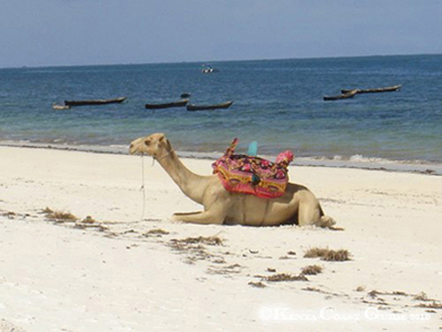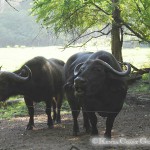Kenyans
are extremely polite and friendly. They appreciate very much proper dress and manners and if you bother to learn some words in Kiswahili, people will gladly help you, although the following conversation is held in English. Entering a shop or a café, a friendly ”Jambo” should be said openly to the public. After a while and some practice you can try a ”good morrning” (Umeamkaje). Don‘t be shy. People will be very pleased to see that you try, even when you can use a small cheat sheet, and it is even not too hard. Here are a few standards for practice:
Good morning. – Umeamkaje.
Hello. – Jambo.
Good evening. – Umeshindaje.
How are you? – Waonje?
Thank you, I‘m fine, and you? – Vyema sana ashante, na wewe?
Thank you very much. – Ashante sana.
Thank you, good bye. – Ashante na kwa heri.
Do you speak english? – Je, waweza kusema kiengereza?
I don‘t speak kiswahili. – Siwezi kusema Kiswahili.
Do I owe you some? – Matozo haya ni ya nini?
This is for you. – Jiwekee hizi wewe mwenyewe.
How much is it? – Ni kiasi gani hicho?
You require to much. – Watoza zaidi mno.
Stop here, please. – Simama hapa.
Now that we are on the topic culture: There are 52 ethnic groups in Kenya. Linguists have even counted 61 languages including indian languages and dielects. But Swahili is the main language and is spoken throughout the entire coastal area and in whole East Africa, and English is the second official language of communication. The largest ethnic groups are: Kikuyu, at 22% population, 14% Luhya, Luo 13% and Kalendschin with 12%. Then there are the Kamba, the Kisi, the Mijikenda, the Maasai, the Samburu and the Turkana. Kuschitic speaking groups in the east are Somali, Oromo and smaller groups like Rendille and El Molo. On the coast, of course, are the Giriama, who oftenly work, as mentioned, in the tourism industry.
Religion is a bit more clearer: About 70% of the population are Christians – Catholics and Anglicans, each with about 26%, Orthodox and numerous African churches with Christian faith are about 2.5%. Beside the 10% of Kenyans who belongs to the traditional African religions, there is an additional about 20% Sunnite Muslims who mainly live on the coast.
All in all, it is a large melting pot of people and religions. Basically it‘s pretty similar to Central Europe during the times of the great migrations around the 3rd to 5th century. At that time one also met every few kilometers another tribe with its own language.
No matter which ethnic group or religion Kenyans belong to, they are very superstitious. This is shown from time to time in small gestures, actions and behaviors which seems a little strange to a European, but it is very likeable.
Of course, this ancient melting pot is reflected in architecture and music. Architecturally the Arabs and Britains left their obvious marks, but in the music, however, the Kenyans have put their own stamp on it. They simply mix up everything, Reggae, Hip-Hop, Rap, Pop and even the classic white Rock – everything is painted over with eastern African harmonies and the language is rarely English. In each Matatu, in every bar – no matter where you move – it rattles and grooves. It‘s like a huge bazaar of sounds, a real treat for musicians.
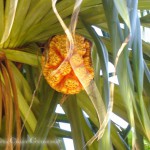 The nature in Kenya is absolutely breathtaking. Especially during the rain season; the vegetation is extremely powerful and blooms in all colors. For those who want to enjoy the richness of the flora and fauna without going on a Safari, can visit the Haller Park at the North Coast Road. There is plenty to see; water buffalos, hippos, giant turtles, the feeding of crocodiles and much more. The park guides are really doing their best to entertain you and they have interesting things to report.
The nature in Kenya is absolutely breathtaking. Especially during the rain season; the vegetation is extremely powerful and blooms in all colors. For those who want to enjoy the richness of the flora and fauna without going on a Safari, can visit the Haller Park at the North Coast Road. There is plenty to see; water buffalos, hippos, giant turtles, the feeding of crocodiles and much more. The park guides are really doing their best to entertain you and they have interesting things to report.
Kikambala, about 20km northward of Mtwapa offers a nice alternation to the noisy Mombasa. Here you can bath at almost empty beaches, go for hikes and enjoy the vegetation. The beaches, however, are rarely developed for tourism and not cleaned up, for example from the sea grass. But therefore it‘s still a secret tip.
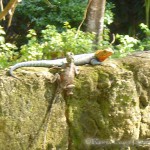 Losing one‘s way is almost impossible. There is the North Coast Road, a highway, and parallel there is a road along the coast line, which leads in southern direction to the small village Kikambala. If you, however, lost your way, just ask for the hotel ”Sun n Sands Beach Resort”. You also should have enough water with you, and of course enough sweets for the kids.
Losing one‘s way is almost impossible. There is the North Coast Road, a highway, and parallel there is a road along the coast line, which leads in southern direction to the small village Kikambala. If you, however, lost your way, just ask for the hotel ”Sun n Sands Beach Resort”. You also should have enough water with you, and of course enough sweets for the kids.
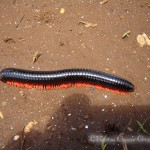 Nature in Kenya, as already mentioned, has a lot to offer. Actually it creeps and crawls wherever you look and this makes it not really necessary to visit HallerPark. Noticeable above all is the variety of lizards. Beside the Gecko’s, which occasional find their way into the rooms and hide at daytime behind pictures and wall mirrors, there are about half a dozen different sorts of lizards.
Nature in Kenya, as already mentioned, has a lot to offer. Actually it creeps and crawls wherever you look and this makes it not really necessary to visit HallerPark. Noticeable above all is the variety of lizards. Beside the Gecko’s, which occasional find their way into the rooms and hide at daytime behind pictures and wall mirrors, there are about half a dozen different sorts of lizards.
This centipede, Kenyans simply call it ”Millipad”, is also very widespreaded. It can get about 20cm long and like to roll itself into plants and bushes. Don’t touch it because it sprays a stinky secretion which helps keep off predators.
 Those dudes are, however, absolutely harmless and flee at once if one comes near. Also the Gecko’s are absolutely harmless and mousy. Be happy if you have such a little subtenant, because it catches all other insects that runs on more than four legs and might stings or bites.
Those dudes are, however, absolutely harmless and flee at once if one comes near. Also the Gecko’s are absolutely harmless and mousy. Be happy if you have such a little subtenant, because it catches all other insects that runs on more than four legs and might stings or bites.
This specimen is also worth to mention: It‘s a snail, which is rarely seen except after heavy rainfalls. Its format, however, is tremendous. This one here is as big as a man’s sneaker. Apart from all these small animals there are also a few kinds of monkeys. Although they are used to people if one‘s getting too near they try to pee on persistent vacationers. So please, for safety reasons, sufficient distance should be maintained.
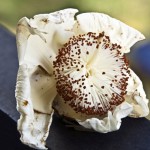
The flora of course is not less impressive. Especially during the rain season since it draws on unlimited resources. It blossoms and grows everywhere, lemon trees exude its fresh scent and ripe mangos fall off the palm trees by itself.
It has something of paradise.
The beaches
along the entire coast are worldwide well known for clean, white and powdery-fine sand and idyllic bays. They are almost all developed for tourism and are therefore well maintained. Throughout the year the water keeps about 25˚Celsius and the water quality is first class. Sun beds and parasols are available in the hotels, on some beaches it is even for free.
More than that you will find numerous Beach Bars and Cafés for beverages and for small and warm snacks as well. If all of a sudden some dark clouds darkens the sky – you don‘t have to drop the idea of visiting the beaches. The downpours are mostly pretty heavy but short. But you should never forget a water resistant sunscreen with high protection factor. The sun is tremendously strong in the equatorial latitudes and especially while swimming you can get sunburned very quickly.
Due to the offshore reef swimming, it is relatively safe regarding shark attacs or heavy swell. Concededly you are bathing on your own risk because there are no lifeguards. There are so-called ”Askaris” who take care about the security of the tourists and to show presence for deterrence of thefts or against too importunate ”Beach Boys”, who are offering goods of all kinds. But if you refuse gently but decisively you won‘t have any problems. As everywhere else the Kenyans appreciate correct clothing. Topless or nude bathing is strictly forbidden. Also camping or overnight staying at the beaches is not permitted.
Water sports like snorkeling, surfing, water or jet-ski is possible at most of the beaches. Also diving, deep sea fishing and sailing trips are offered as well by European firms – but for this you should ask at your hotel, they will be happy to assist.
A Safari of course, belongs to the touristic ”musts” of a trip to Kenya. Due to duration, the way of overnight stays or in which park you are going, there are all sorts of variants. More than that a Safari is not absolutely free of hazards. Every year accidents occur, mostly due to careless and incompetent guides. Therefore you should ask your hotel management for a serious Safari-Company. Yourself should be well prepared as well. Solid boots (trekking boots), long trousers and long-sleeved cotton shirts is a must, also sunscreen and insect repellent. A safari-hat is recommendet since there isn‘t any shade outside there.
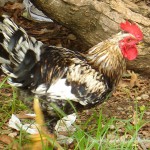 Important notice!
Important notice!
Immediately after you have checked in to your hotel room, have a look outside the window of your room. Have a look if the hotel borders to a property with a rooster. If yes – require a room on the other side of the hotel. Otherwise you will never sleep late.As friendly and helpful Kenyans are, poverty is widespread and, of course, everybody expects a small payment for his information or helpfulness. Kenya is a service society and the rate of unemployment in some areas is about at 70%. If a taxi driver, for instance, shows you the way to the next exchange bank, or tells you where to get international newspapers, this information should be worth about a 100 KES.
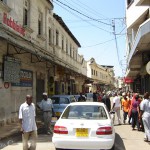 Poverty is also shown especially on the kids. In downtown Mombasa you will be surrounded very quickly by begging kids. They will follow you even over several blocks. Many elderly and disabled persons are often sitting on the pavement and have begging as their only income. Vacationers will also be insistently asked by healthy adults for donations to orphanages or a children‘s initiative. To make the matter appear to be serious, they will show a petition for you to sign as evidence of your donation. But it‘s a fake. Just shake your head, ignore them and keep on going your way. Donations for children‘s initiatives are collected only by nuns and other church employees who will identify themselves and do so without being asked.
Poverty is also shown especially on the kids. In downtown Mombasa you will be surrounded very quickly by begging kids. They will follow you even over several blocks. Many elderly and disabled persons are often sitting on the pavement and have begging as their only income. Vacationers will also be insistently asked by healthy adults for donations to orphanages or a children‘s initiative. To make the matter appear to be serious, they will show a petition for you to sign as evidence of your donation. But it‘s a fake. Just shake your head, ignore them and keep on going your way. Donations for children‘s initiatives are collected only by nuns and other church employees who will identify themselves and do so without being asked.
Children beggers should not be supported especially because the primary schools are for free and the kids are often sent by their parents to beg. In the Arabian quarter you will see veiled girls holding their hand begging to you and the other hand holds the sleeve that you don‘t see the gold bracelet on their wrist.
So please, if you like to give – just give the old and disabled persons who have no chance anymore or the nuns and church employees.
If the kids won‘t leave you alone, it is not a problem showing them an angry face. Tell them they should better go to school instead of begging. If you give some to the old, it shouldn‘t be less than 20KES and no more than 100KES. Please don‘t give coins with a nominal value below 10KES, which actually have no real value and it would be rather insulting because they all feel pretty ashamed of their poverty anyway.
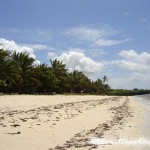 It‘s somewhat different on the country side: If you ever go to the beautiful beaches of Kikambala or enjoy the local vegetation and landscape, you have to have enough candies or any other sweets with you.
It‘s somewhat different on the country side: If you ever go to the beautiful beaches of Kikambala or enjoy the local vegetation and landscape, you have to have enough candies or any other sweets with you.
A lot of kids are living out there and their only chance to get some sweets are the few tourists who are in the area.
If you‘ve ever seen the disappointed faces of the little ones, in case you‘ve had no sweets – from now on you will always have enough candies in your pocket.
As heavenly Kenya appears to Europeans or in common to people from the western world, due to their economic problems, countries like Kenya always have to struggle with further problems like poverty, corruption and the lack of education. These problems are not a God‘s given curse of those countries. The so-called Western world bears a significant share, that especially countries of the second and third world and countries with oil deposits and mineral resources are regularly leading the rankings of corruption and prostitution at organizations like Amnesty International or Transparency International.
Now Kenya has no significant natural resources which is probably more a reason for hope of an improvement of the conditions. However, prostitution is widespread and goes hand in hand with corruption.
For some time Kenya has the same reputation for some people, whether male or female, like Thailand had in the past. This website doesn‘t want to judge or blame anybody, but there are mostly male, white vacationers who take advantage of the local poverty. Many of them require service without condoms and do not realize that they unnecessarily potentiate the AIDS rate among the population, because these vacationers are constantly changing their partners. The prostitutes are not the problem – the problem is almost exclusively men whether they are white or black.
Meanwhile there are many organizations trying with patience to teach the local men about the need of condoms. However, this effort is sabotaged by the behavior of some tourists. Also for this reason the rate of the infected is up to 80% in some areas.
It should also be mentioned that this not only affects heterosexual men. Although in Kenya homosexuality is officially still punishable by death, it has not been practised for a long time – there are also homosexuals here, of course, and therefore also prostitution with its same problems.
Photos:
Peter Graves – KenyaCoastGuide.com
Ulla Trampert – pixelio.de



